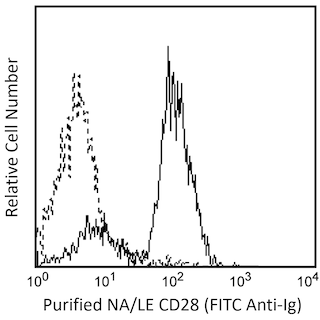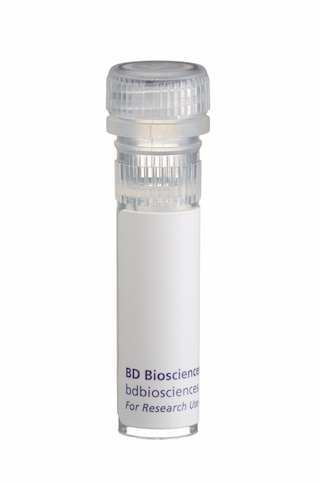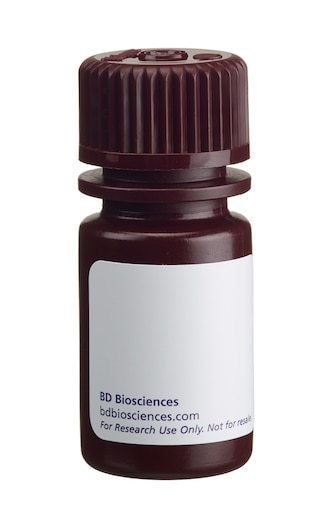Old Browser
This page has been recently translated and is available in French now.
Looks like you're visiting us from {countryName}.
Would you like to stay on the current country site or be switched to your country?


.png)

Multicolor flow cytometric analysis of LAG-3 (CD223) expression on Unstimulated (Top Plots) and Stimulated (Bottom Plots) Human peripheral blood lymphocytes. Human peripheral blood mononuclear cells (PBMC) were cultured for 3 days with plate-bound Anti-Human CD3 (Cat. No. 567109/567108/555329; 10 µg/ml for coating) and soluble Anti-Human CD28 (Cat. No. 555725; 1 µg/ml) antibodies, and Recombinant Human IL-2 Protein (Cat. No. 554603; 10 ng/ml). Unstimulated PBMC (from the same donor) and Stimulated PBMC were stained with BD Horizon™ BV421 Mouse Anti-Human CD8 (Cat. No. 562428/562429; Left Plots), BD Horizon™ R718 Mouse Anti-Human CD279 (PD-1) [Cat. No. 566974/566975; Right Plots], and BD Horizon™ RB780 Mouse Anti-Human LAG-3 (CD223) [Cat. No. 569094/569095] antibodies. BD Via-Probe™ Cell Viability 7-AAD Solution (Cat. No. 555815/555816) was added to cells right before analysis. Bivariate pseudocolor density plots showing the correlated expression of LAG-3 (CD223) versus CD8, or LAG-3 (CD223) versus CD279 (PD-1) were derived from gated events with the forward and side-light scatter characteristics of viable (7-AAD-negative) unstimulated or stimulated lymphocytes. Flow cytometry and data analysis were performed using a BD LSRFortessa™ X-20 Cell Analyzer System and FlowJo™ software.
.png)

BD Horizon™ RB780 Mouse Anti-Human LAG-3 (CD223)
.png)
Regulatory Status Legend
Any use of products other than the permitted use without the express written authorization of Becton, Dickinson and Company is strictly prohibited.
Preparation And Storage
Recommended Assay Procedures
BD® CompBeads can be used as surrogates to assess fluorescence spillover (compensation). When fluorochrome conjugated antibodies are bound to BD® CompBeads, they have spectral properties very similar to cells. However, for some fluorochromes there can be small differences in spectral emissions compared to cells, resulting in spillover values that differ when compared to biological controls. It is strongly recommended that when using a reagent for the first time, users compare the spillover on cells and BD® CompBeads to ensure that BD® CompBeads are appropriate for your specific cellular application.
Product Notices
- When using high concentrations of antibody, background binding of this dye to erythroid fragments produced by ammonium chloride-based lysis, such as with BD Pharm Lyse™ Lysing Buffer (Cat. No. 555899), has been observed when the antibody conjugate was present during the lysis procedure. This may cause nonspecific staining of target cells, such as leukocytes, which have bound the resulting erythroid fragments. This background can be mitigated by any of the following: titrating the antibody conjugate to a lower concentration, fixing samples with formaldehyde, or removing erythrocytes before staining (eg, gradient centrifugation or pre-lysis with wash). This background has not been observed when cells were lysed with BD FACS™ Lysing Solution (Cat. No. 349202) after staining.
- Please refer to www.bdbiosciences.com/us/s/resources for technical protocols.
- This reagent has been pre-diluted for use at the recommended Volume per Test. We typically use 1 × 10^6 cells in a 100-µl experimental sample (a test).
- An isotype control should be used at the same concentration as the antibody of interest.
- Please observe the following precautions: Absorption of visible light can significantly alter the energy transfer occurring in any tandem fluorochrome conjugate; therefore, we recommend that special precautions be taken (such as wrapping vials, tubes, or racks in aluminum foil) to prevent exposure of conjugated reagents, including cells stained with those reagents, to room illumination.
- Caution: Sodium azide yields highly toxic hydrazoic acid under acidic conditions. Dilute azide compounds in running water before discarding to avoid accumulation of potentially explosive deposits in plumbing.
- For fluorochrome spectra and suitable instrument settings, please refer to our Multicolor Flow Cytometry web page at www.bdbiosciences.com/colors.
- Human donor specific background has been observed in relation to the presence of anti-polyethylene glycol (PEG) antibodies, developed as a result of certain vaccines containing PEG, including some COVID-19 vaccines. We recommend use of BD Horizon Brilliant™ Stain Buffer in your experiments to help mitigate potential background. For more information visit https://www.bdbiosciences.com/en-us/support/product-notices.
- Please refer to http://regdocs.bd.com to access safety data sheets (SDS).
- Cy is a trademark of Global Life Sciences Solutions Germany GmbH or an affiliate doing business as Cytiva.
- For U.S. patents that may apply, see bd.com/patents.
Companion Products






The T47-530 specifically recognizes the Lymphocyte Activation Gene 3 (LAG-3) protein which is also known as, Protein FDC, or CD223. LAG-3 is a ~70 kDa type I transmembrane glycoprotein that belongs to the Ig superfamily and exhibits homology to CD4. LAG-3 is expressed on NK cells, regulatory T cells, and activated conventional T cells with higher expression found on CD8+ T cells compared with CD4+ T cells. LAG-3 is an activation induced cell surface molecule that like CD4, binds MHC class II molecules, but with much higher affinity. This may enable LAG-3 to act as a negative competitor of CD4 for MHC class II ligand binding. LAG-3 may associate with the TCR-CD3 complex to downregulate TCR signal transduction and T cell clonal expansion. In contrast, LAG-3-induced signaling may promote dendritic cell activation.

Development References (9)
-
Al-Mterin MA, Murshed K, Elkord E. PD-1 expression, among other immune checkpoints, on tumor-infiltrating NK and NKT cells is associated with longer disease-free survival in treatment-naïve CRC patients.. Cancer Immunol Immunother. 2022. (Clone-specific: Flow cytometry). View Reference
-
Casati C, Camisaschi C, Novellino L, et al. Human lymphocyte activation gene-3 molecules expressed by activated T cells deliver costimulation signal for dendritic cell activation. J Immunol. 2008; 180(6):3782-3788. (Biology). View Reference
-
Hannier S, Tournier M, Bismuth G, Triebel F. CD3/TCR complex-associated lymphocyte activation gene-3 molecules inhibit CD3/TCR signaling. J Immunol. 1998; 161(8):4058-4065. (Biology). View Reference
-
Huang CT, Workman CJ, Flies D, et al. Role of LAG-3 in regulatory T cells. Immunity. 2004; 21(4):503-513. (Biology). View Reference
-
Moya R, Robertson HK, Payne D, Narsale A, Koziol J, Davies JD. A pilot study showing associations between frequency of CD4(+) memory cell subsets at diagnosis and duration of partial remission in type 1 diabetes.. Clin Immunol. 2016; 166-167:72-80. (Clone-specific: Flow cytometry). View Reference
-
Murga-Zamalloa CA, Brown NA, Wilcox RA. Expression of the checkpoint receptors LAG-3, TIM-3 and VISTA in peripheral T cell lymphomas.. J Clin Pathol. 2020; 73(4):197-203. (Clone-specific: Flow cytometry). View Reference
-
Toor SM, Murshed K, Al-Dhaheri M, Khawar M, Abu Nada M, Elkord E. Immune Checkpoints in Circulating and Tumor-Infiltrating CD4+ T Cell Subsets in Colorectal Cancer Patients.. Front Immunol. 2019; 10:2936. (Clone-specific: Flow cytometry). View Reference
-
Triebel F, Hacene K, Pichon MF. A soluble lymphocyte activation gene-3 (sLAG-3) protein as a prognostic factor in human breast cancer expressing estrogen or progesterone receptors. Cancer Lett. 2006; 235(1):147-153. (Biology). View Reference
-
Triebel F, Jitsukawa S, Baixeras E, et al. LAG-3, a novel lymphocyte activation gene closely related to CD4. J Exp Med. 1990; 171(5):1393-1405. (Biology). View Reference
Please refer to Support Documents for Quality Certificates
Global - Refer to manufacturer's instructions for use and related User Manuals and Technical data sheets before using this products as described
Comparisons, where applicable, are made against older BD Technology, manual methods or are general performance claims. Comparisons are not made against non-BD technologies, unless otherwise noted.
For Research Use Only. Not for use in diagnostic or therapeutic procedures.